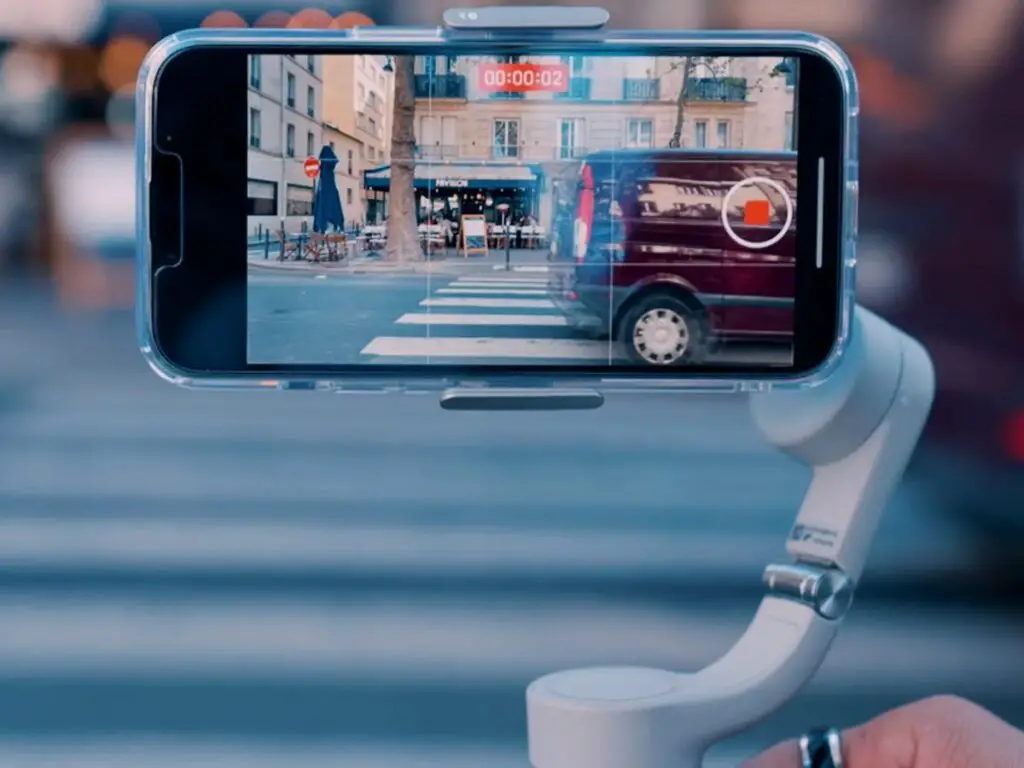With continuous progress in both technological and narrative storytelling, phone filmmaking is becoming more and more likely to supplant conventional film. With an iPhone, many of the technical challenges and obstacles of breaking into filmmaking are removed. It enables a photographer to shoot on the move, enabling them to capture moody visuals that would be difficult with bulkier equipment. This allows both beginners and seasoned professionals to brush up on their skills and experiment with their visual language without having to spend a lot of time or money. With its latest model, the iPhone 13, Apple has also introduced a new cinematic mode that has excited filmmakers and students around the world. Now before we delve into what is iPhone 13’s cinematic mode, we all know Apple has one of the best cameras when it comes to smartphones.
In fact, iPhone filmmaking has long been a field of much interest and innovation within indie circles, with acclaimed filmmakers like Steven Soderberg returning to it time and again. This mode allows you to shoot video in 4K resolution at 24 frames per second, providing a much more cinematic look than what you would get with the standard iPhone camera. So let’s break it down for you!
What is iPhone 13 Cinematic Mode and How Does it Work?
Laptopmag describes the new feature in its iPhone 13 cinematic mode review as “a sort of video version of portrait mode.” Indeed, this new setting allows the user to capture gorgeous, wide visuals in a range that would have been previously unthinkable. The idea is to bring all of the embellishments required to capture cinematic footage, to the most basic requirement — the camera. Thus, it negates the need to work extensively in post-production, or even use third party applications for adding effects. From the primary camera itself, you can adjust all of the settings to get the perfect shot.
How to Use Cinematic Mode on iPhone?
To use cinematic mode, simply open the camera app and select the “cinematic” option at the bottom of the screen. After selecting that, you will find a number of options that will allow you to select depth of field, background and foreground options, and light effects. One of the most impressive features is the ability to track multiple focus points. The camera tracks motion so as to recognise the subject immediately, and allows the user to lock, change and shift focus accordingly. One can also create focus racks (moving from one subject to another or focusing on more than one simultaneously) after the footage has been shot.
One of the best parts about its ability to rack multiple focus points, and provide an airbrushed-looking blended effect is that it softens the spatial field around the object of focus in a manner that is not too jarring. Since the raw footage captures the background and the foreground rather sharply, this option is a great tool to have. This allows the user to judge and adjust depth of field accordingly.
Similarly, the smooth focus tracking procedure captures light sources in a wonderful manner, allowing the user to create lovely bokeh shots with out of focus light. Usually, professional cameras or lenses are required to get this effect while shooting on a phone. One could also use third party applications to create a similar look, but it does not work in a very integrated way. Instead, the iPhone 13’s cinematic mode makes it very user-friendly by integrating these options with the primary user interface of the main camera. Not having a separate cinematic mode app also makes sure that the device’s processor is not unduly overwhelmed.
These above options can also be added after the video has been captured. This offers a lot of benefits for filmmakers and students.
For one, it gives you more control over your shots, allowing you to create videos with a more professional look.
Secondly, it blends the look and feel of conventional film with the accessibility of the camera application on an iPhone. By combining crucial features and providing adjustments like depth of field, it allows artists to create truly stunning visuals without getting too caught up in the mechanics of the equipment required.
Is the Cinematic Mode A Game Changer?
Cinematic mode heralds a newer, more accessible idiom of filmmaking. It allows you to shoot high-quality video with your iPhone, something that was not possible before. While footage could obviously be shot on phones, it likely required a lot of editing and polishing on external programs and applications to meet cinematic standards.
But this new mode brings the basics of filmmaking to the primary camera. Since it runs on the neural engine inside the bionic A15 chip, there is no danger of it slowing down your device or causing it to underperform. This makes the iPhone 13 an ideal tool for filmmakers and students who want to create professional-looking videos on a budget. Add that to the high quality and finish of the Apple camera in general, and the cinematic mode is quickly shaping up to be one of the most impressive tools for filmmaking on smartphones yet. Now, the diagonal dual rear camera structure of the new model also has something to add to this. This makes for an improved aperture, which means that the user can shoot wider, more cinematic looking shots with great focus and just the right amount of lighting.
Just because your footage was shot on a phone does not mean that it has to look shabby or underdeveloped. With its new cinematic mode, filmmakers and students can achieve those classic “cinematic” shots that were once only possible with DSLR cameras. Additionally, by shooting in 24 frames per second, you can still maintain the industry standards for capturing life-like motion.
In combination with the ultra wide lenses, it allows the user to capture a wide range of action without having to move around the phone constantly. The iPhone 13 cinematic mode zoom feature also deserves special mention, as it allows the user to create smooth, uninterrupted takes that don’t distract from the focus and depth of field employed on a certain subject.
It can also track multiple points of focus, which means that whenever another subject enters the frame, the camera will capture their movements in focus too. All of this information is saved real-time; hence, you can go back after the footage is shot and make changes such as shifting focus, etc. Apple studied the creative choices of cinematographers to create an algorithm for this feature, which would allow it to capture smartly focused footage to begin with.
Conclusion
The cinematic mode feature brings the iPhone much closer to traditional shooting equipment, according to cinematographers like Greg Frasier. Frasier, who has shot high-profile projects like Dune and The Batman, had this to say:
There were no limitations with what I could do with this particular camera. With cinematic mode, what’s exciting is that we can actually choose focus later. To me, that’s really bringing it up to the professional film cameras. I believe with the advent and the addition of cinematic mode, we’re going to very, very soon see filmmakers make films in a different way, which is exciting.
By allowing filmmakers to create videos that look like they were shot on a professional camera, this mode is sure to revolutionize the way we make films. Interested readers may note that while there is no option for the cinematic mode on iPhone 12, they can access some of the other features of the same (like editing focus after shooting footage) on other iOS devices like Apple iPhone: from iPhone XS/XR, iPad Pro 12.9 inch: 3rd generation and above iPad Pro 11 inch: All models, iPad Air: 3rd generation and above, iPad mini: 5th generation and above.
What excites you most about the cinematic mode? Let’s talk in the comments below!




